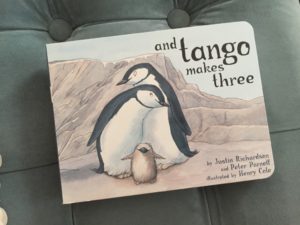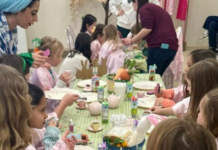“No one is born hating another person because of the color of his skin, or his background, or his religion. People must learn to hate, and if they can learn to hate, they can be taught to love, for love comes more naturally to the human heart than its opposite.” – Nelson Mandela
While there are countless mysteries surrounding our children and why they sometimes act the ways that they do, there is an answer to one quandary we know to be true: children are not born hating or being intolerant of others. Both of these actions are learned. Sadly, although it is 2016 and it seems we all hope for a world full of love and acceptance, we know all too well that these values are being instilled in many children today.
In light of the recent tragedy at Pulse Nightclub in Orlando, the outpouring of support for the lesbian, gay, bisexual, transgender, and queer/questioning (LGBTQ) community has been empowering, and impactful. But as with many events stemming from hate such as this, we often question how to discuss them with our children, as well as wonder how we can model support for those targeted in an effort to raise more accepting kids.
Since the topic of discussing sexuality and sexual/gender identity with our children can be an intimating one, even regardless of Orlando, here are some thoughts pertaining to how we can raise kids in a household filled with love and acceptance.
Be mindful of your words. We all know that our children’s minds are sponges, ready to soak up (and repeat) anything that they hear. Using pejorative words pertaining to the LGBTQ community can quickly result to these words also becoming a part of your child’s vocabulary. Reflecting on your word choices and making adjustments as needed can have a huge effect.
Taking this a step further, if you are with your child and hear someone using an LGBTQ term in a negative context, politely telling them that the word is offensive shows your child not only that you choose not to use these words personally, but that you find them to be so hurtful, you are willing to put yourself in a possibly awkward position in order to stand up to hateful speech.
Note: For many years, using the term “queer” was a big no-no, but recently it has been reclaimed by the LGBTQ community. It is very likely you will see or hear the term used, and unless it is in a derogatory context, there is no cause for alarm.
Read children’s books that show LGBTQ-positive images. There are quite a few books out there that act as the perfect way to introduce a child to individuals and families who identify outside of the heterosexual norm. One award winning book, “And Tango Makes Three“, by Justin Richardson and Peter Parnell, tells the story of two male penguins who are in love, and are able to adopt an abandoned egg. It is sweet, beautifully illustrated, and the best part is that it’s based on a true story of a penguin family living in the Central Park Zoo. Here is a great list of LGBTQ-positive books that you may consider adding to your library.
Discuss important events. If you have older children and various LGBTQ related events are happening, feel free to talk about them as you would any other topic. Of course, it is important to share only what you believe to be age appropriate, but positively talking about events such as Pride Week, or pride parades, will help model acceptance to your children. If your child is covering US History in school, and the modern gay rights movement is part of the curriculum, they may also mention the the Stonewall Inn to you. Speaking of…
Visit the Stonewall Inn. On June 24, 2016, President Obama named the Stonewall Inn the first LGBTQ-related national monument. If you’ve never been to the Stonewall Inn, it’s definitely a great place to visit. It is considered by many to be the birthplace of the gay rights movement, and the rich history there has paved much of the way for where LGBTQ rights stand today.

Don’t be afraid to answer questions. Chances are that at some point, your child will come home and inquire about a friend with two moms, or two dads. While these questions may catch you off guard, it’s very important to take a moment and answer them. Your explanation doesn’t have to be lengthy; a simple response will suffice. And if your tone and body language are casual, it is likely that your child will be pleased, and not even offer a follow-up question.
Example:
Child: “Mom, why does my friend Jane at school have two moms?”
Parent: “You know how you have a mom and a dad who take care of you, and love you very much? Well, Jane is lucky to have two moms who take care of her, and love her.”
It is never too early, or too late, to be purposeful in aiding your child’s understanding of acceptance. The impact your actions have on your child is boundless, and these values that shape their personality as youth will stay with them as they transition into adults. You also hold the key to establishing a household where your child knows it is okay be who they are, regardless of their sexual/gender identity.
Terminating a world filled with hate starts with us as parents. The beauty of raising accepting children is that they will know the significance of raising their own children in the same environment, causing a ripple effect through generations to come. We all have the power to extinguish discrimination and animosity towards others, and there is no better time to claim that power than today.
“We rise and fall and light from dying embers, remembrances that hope and love last longer. And love is love is love is love is love is love is love is love, cannot be killed or swept aside.” – Lin-Manuel Miranda





























I think it’s important to try to avoid indoctrinating our kids in any way. Teach/show them there is no “normal”–people come in all shapes, colors, sexual identities, etc. There are teachable moments in this respect all the time–take advantage of them. If this country is to have a future (and every day, that future seems murkier), it will be our children’s. Let’s help them avoid tribalism and embrace love and acceptance.
Thank you, Dave. I do hope we can all come together to make this country a better place for our children.